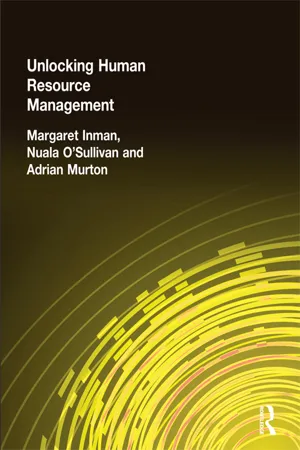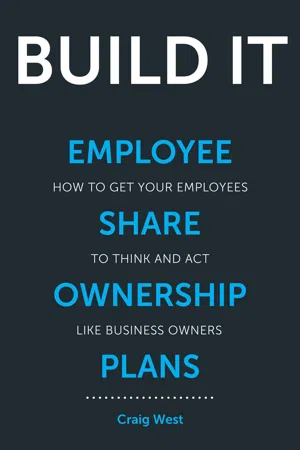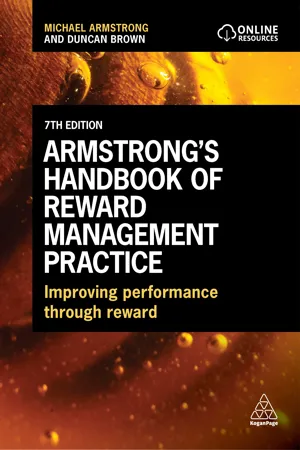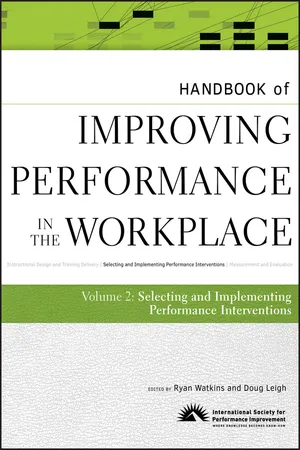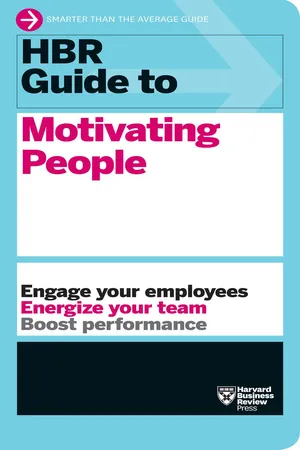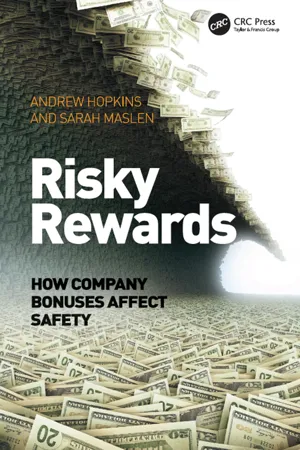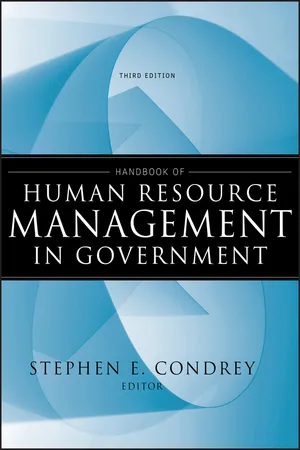Business
Incentives for Employees
Incentives for employees are rewards or benefits offered by employers to motivate and encourage their staff to perform at their best. These incentives can take various forms, such as bonuses, promotions, flexible work hours, or additional vacation time. By providing attractive incentives, businesses aim to boost employee morale, productivity, and overall job satisfaction.
Written by Perlego with AI-assistance
Related key terms
Related key terms
1 of 4
Related key terms
1 of 3
11 Key excerpts on "Incentives for Employees"
- eBook - ePub
- Margaret Inman(Author)
- 2014(Publication Date)
- Routledge(Publisher)
As you can see, most motivation theories date back many years and so their relevance to today’s work environment, could be questioned. Some believe that motivation in the twenty-first century should be based on a different set of criteria such as friendship, the benefits of work and respect (Reis and Pena 2001). In fact in Mercer’s Global Total Reward Survey (2008) ‘respect’ was rated as the highest factor in employee motivation (80 per cent), followed closely by ‘type of work’ (73 per cent), the ‘people who work with you’ (71 per cent) and ‘work-life balance’ (69 per cent). Pay and benefits were amongst the lowest rated motivators. Despite this, there is a general support for some of the early theories, particularly those of Maslow and Herzberg, as they are seen to provide basic principles on which organisations can motivate and support their employees (Mullins 2008). Being aware of the different motivational theories coupled with more recent research will ensure that the complexity of motivation is not forgotten when deciding appropriate reward strategies.Reward systemsRewarding people for a good job done should be linked to the values or strategy of the organisation. So if an organisation wants to encourage good customer service then it would make sense to reward those who give good customer service. Similarly those organisations who value teamwork, should reward effective teamworking. The value individuals in the organisation put on different types of reward should also inform decisions of how much and in what form, to reward their employees. Reward is not just about the money paid in a salary. Reward can come in many forms. Financial rewards can be in the form of basic salary, but it can also be through share ownership and financial benefits such as pensions or private health care. People can also be rewarded in non-financial ways such as through recognition, career opportunities or a good quality of working life. Whatever form of reward a company operates, the fairness of how people are rewarded is essential. Any reward system which is perceived as unfair will not be effective and is likely to leave employees disillusioned and demotivated. We will first look at the types of financial reward which operate in organisations.
Base pay4.3 Financial rewards This is the amount of money which is paid for a particular job. It is often called ‘payment by time’ where an individual is paid for a specified amount of time at work. This can be based on an hourly rate or as a weekly or monthly salary. There are many different types of pay structures but they tend to fall into two categories, spot pay and graded pay. - eBook - ePub
BUILD IT
Employee Share Ownership Plans
- Craig West(Author)
- 2021(Publication Date)
- Succession Plus(Publisher)
This must be industry-competitive. If you pay less than the rest of the market, you will attract a lower quality of employee, which will be reflected in your operating results. Compulsory employee benefits such as superannuation, annual leave, personal leave and so on can also be enhanced to help position your company as an employer of choice, and will help you retain high-performing staff. For example, company funded superannuation contributions could be increased after a certain number of years’ service, or additional paid annual leave offered to long-standing employees.Discretionary Employee Benefits These may be financial (such as employee share schemes, employer-funded health insurance or study leave) or non-financial. Non-financial incentives recognise and reward performance, as well as demonstrating a commitment to employees by assisting them to achieve some of their lifestyle objectives.Short-term non-financial incentives might include tickets to the theatre or a sporting event, dinner at a restaurant, a weekend away or even just a pat on the back or public acknowledgement for a job well done. They may be awarded to individuals or to teams, to be enjoyed together. Long-term non-financial incentives might include flexible working hours, the option to work from home, the provision of childcare facilities, job sharing and so on.Performance-Based Pay This is about rewarding people for their results and should also include both short-term and long-term incentives.Short-term incentives are designed to influence immediate behaviour to achieve specific short-term goals. They might take the form of cash bonuses, commissions, fringe benefits or anything else that is meaningful to the employee but that does not cost the company unnecessarily in terms of margin.Long-term incentives provide employees with a vested interest in increasing the value of the organisation. In the US and UK, long-term incentives make up between 50 and 60% of an executive’s annual remuneration. There is a growing global trend toward decreasing the percentage of fixed remuneration and increasing the percentage of remuneration at risk in both the short and long term. With high performing staff, linking higher remuneration to results is a win/win for both the business and the employee – the sky is literally the limit for both. Many long-term incentive schemes include a vesting period, often up to five years, which means that the employee must remain with the company for a longer period of time before he or she can enjoy the full benefits of the scheme. - Michael Armstrong, Duncan Brown(Authors)
- 2023(Publication Date)
- Kogan Page(Publisher)
Some people will be more motivated by money than others and, if handled properly, an incentive scheme in the right context can encourage them to perform more effectively as long as they can link their effort to the reward and the reward is worth having. But others may be less interested in money and will respond more to intrinsic or non-financial rewards. It can be argued in accordance with total reward philosophy (see Chapter 2) that most people are likely to react positively to a judicious mix of both financial and non-financial rewards. What is clear is that naïve assumptions about the power of money to motivate can lead organizations into developing simplistic performance-related pay schemes or other forms of incentives. And we can be sure that a multiplicity of interdependent factors are involved in motivating people. It should also be remembered that while an increase in pay arising from a performance pay or bonus scheme may motivate people who get it, for a limited period perhaps, it may well demotivate those who don’t get it or feel that they are not getting enough compared with other people. The number of people demotivated in this way could be larger than the number who have been motivated. Paradoxically, therefore, such schemes are in danger of increasing the amount of demotivation existing in the organization rather than enhancing motivation. Non-financial rewards Non-financial rewards are those that focus on the needs people have to varying degrees for recognition, achievement, responsibility, autonomy, influence and personal growth. They incorporate the notion of relational rewards, which are the intangible rewards concerned with the work environment (quality of working life, work–life balance), recognition, performance management, and learning and development- Ryan Watkins, Doug Leigh, Ryan Watkins, Doug Leigh(Authors)
- 2009(Publication Date)
- Pfeiffer(Publisher)
A bonus is a goal-driven incentive payment. Bonus pay can be an effective motivational tool because it enables an employee’s effort and good performance to translate into recognition and a reward. Bonuses thus help to align the interests of the employee with that of the firm, thereby creating an incentive for the employee to perform efficiently and to a high standard. An annual bonus scheme covering company executives and paid annually based on a single year’s performance is a common industry practice, but bonus plans that link pay to a specific areas of company business strategy, such as employee recruitment and retention, quality and customer service, have now gained the attention of company management (IDS, 2007). The practice of tying bonuses to multiple business goals can take many different forms. For instance, it is possible to operate several bonus schemes providing appropriate incentives for different employee groups, while also operating corporate level (or business unit level) schemes to reward all staff for the overall performance of the company. This is based on the conjecture that both personal and corporate-level factors are important when devising optimal incentives in new industrial environments. Thus, targets can be set for specific jobs, teams, or departments, alongside company-wide elements. The outcome of these schemes critically depends on a combination of factors, including performance measurement methodologies and the structure of the pay-performance relation.Stock Option Plans
Stock option plans are used to increase the equity stake of CEOs and top executives so their interests match those of the shareholders. The underlying assumption is that when executives own stock it will motivate them to take actions that improve the firm’s market value. A stock option is given to a CEO at a specific exercise or strike price (C), which is typically the market price of the stock when the option is granted. The CEO is then in the possession of a contract that entitles him to purchase shares at the option’s fixed exercise price (C) rather than at the market price (P) . Since the value of the option increases with the rise in the market price of the company’s stock, it also increases the value of CEO’s holdings. The option is “in-the-money” when the current market price of the stock exceeds the exercise price of the option.- eBook - ePub
- John Stredwick(Author)
- 2013(Publication Date)
- Routledge(Publisher)
It is clear from many research projects that employees are motivated in different ways and that encouraging employees to work effectively is contingent upon the nature of the organisation. Knowledge workers may respond better to individual challenges for their small teams, together with freedom of action to influence the result. For manufacturing employees, motivation may arise from greater involvement in their workplace and shorter-span challenges. Communication and effective feedback is crucial to the process in all cases, as is injecting a degree of stimulation, enjoyment and excitement into the way that employees are challenged.The influence of motivation theory
Conclusions on motivation are therefore difficult to reach. There is no doubt that money motivates in many ways for many people much of the time but certainly not everybody all of the time. Even more perplexing, money can motivate up to a certain level but this differs greatly between individuals. To add further confusion, much of the research basis of Herzberg and Maslow has been disputed in recent years with results leading to varying conclusions.For this reason, the reward area remains, in practice, an area of conflicting policies. Much of the private sector has adopted the expectancy and goal-setting approach and aims to motivate the majority of its employees through pay for performance schemes based on the achievement of goals. In the public and voluntary sectors, on the other hand, the picture is very mixed, with needs theories mostly to the fore and much concentration on the intrinsic satisfaction related to the job.COMPONENT PARTS OF THE REWARD PACKAGEThere are numerous elements in the reward package and they are illustrated in Figure 6.3 .Direct rewards consist of:■ Basic pay, which is the hourly wage or weekly/monthly salary that is guaranteed to be paid.■ - eBook - ePub
Introduction to Human Resource Management
A Guide to HR in Practice
- Charles Leatherbarrow, Janet Fletcher(Authors)
- 2018(Publication Date)
- CIPD - Kogan Page(Publisher)
These are benefits that, other than administrative costs, are at no cost to the employer, yet can be very attractive to the employee. They typically would include costs savings for the employee in the purchase of cars, cycles, holidays, hotel rooms, etc. Other affinity deals include extra ‘onboard spend’ with cruise holidays and preferential discounts on gym and similar types of activity clubs.Given the opportunity to start with a clean sheet and taking the role of a manager:Activity 12.3
- What would you include in a benefits scheme for your staff?
- Why would you make these choices?
- What criteria would you use to guide you in your decision making?
- How would you go about defining your ideas? Whom would you include in the process?
- What is the cost to the organisation of the benefits package you have developed?
You may find some help within the CIPD’s factsheets on reward benefits: 1) Employee Benefits: an introduction (2017k); and 2) Flexible and voluntary benefits (2016). These factsheets can all be found on the CIPD ‘Knowledge Hub’ web page at: https://www.cipd.co.uk/knowledgeRewards with financial value
Many, but not all, organisations have reward systems in place that are designed to recognise the delivery of a project, piece of work or outstanding performance. It could also be that an employee has made a useful suggestion or delivered on targets over the previous year. The nature of the rewards range is varied: cash bonus payments, gifts, gift vouchers, holiday breaks, etc.For a reward to be valued, the individual employee has to value the reward. This might be a statement of the obvious but it is important to recognise this point when considering how to structure benefits that have a financial value.Reward and motivation
The specifics of motivation theory are dealt with in some depth in Chapter 11 - Harvard Business Review(Author)
- 2019(Publication Date)
- Harvard Business Review Press(Publisher)
SECTION TWO
Understand Common Motivators
Passage contains an image
CHAPTER 4
It Takes More Than Just Extrinsic Rewards to Inspire People
When people think about how to motivate employees, it’s often external rewards like pay hikes, promotions, prizes, or bonuses that come immediately to mind. But managers have a lot more tools at their disposal. In fact, research shows that intrinsic rewards are generally more effective at sustaining high performance and engagement—and are fortuitously under a manager’s control. Let’s take a closer look at why motivating with money might not be the best strategy.Extrinsic Rewards
External, tangible forms of recognition are often the first course of action when the troops are flagging. On the surface, extrinsic rewards tend to be easy to execute: “If you make your quota, we’ll pay you $5,000.” In fact, most organizations’ established reward systems are built around extrinsic rewards, and in some instances, they are effective, particularly in industries like sales, where bonuses can be linked to reaching certain quantitative goals. (See chapter 7 for more on how to reward salespeople effectively.)But many managers disagree with the notion that financial incentives are necessary to boost performance. Extrinsic rewards don’t necessarily make people work harder or better. As Alfie Kohn writes in his widely cited HBR article, “Why Incentive Plans Cannot Work,” “rewards typically undermine the very processes they are intended to enhance.”When such motivators do succeed, the positive effects are often short-lived. Money matters, certainly, and an organization will have a tough time recruiting and keeping good employees without a competitive level of pay and benefits. (As you can see from the sidebar, “The Most Desirable Employee Benefits- eBook - ePub
- Richard Pettinger(Author)
- 2020(Publication Date)
- Routledge(Publisher)
Chapter 4 Motivation and rewards Motivation is a reflection of the reasons why people do things. All behaviour has purposes. All behaviour is therefore based on choice: people choose to do the things they do. Sometimes this choice is very restricted (sink or swim for example). Sometimes it is constrained by the law (for example, stopping the car when the traffic lights are red). And again, it is constrained by the norms and processes of society: for example, people tend to wear smart clothes to a party where they know that everybody else will be well dressed. In each case however, there is a choice, though the propensity, encouragement and direction to choose one course of action rather than another in the examples given is strong, if not overwhelming. The ability to gain the commitment and motivation of staff in organizations has been recognized as important in certain sectors of the business sphere. It is now more universally accepted as a critical business and organizational activity, and one that has highly profitable returns and implications for the extent of the returns on investment made in the human resource. There is a direct correlation between going to a lot of trouble to motivate staff and profitable business performance. In the first place, the ability to motivate staff in the workplace stems from understanding the following: A general appreciation of how human beings behave in particular situations, and in response to their needs to satisfy and fulfil basic drives, instincts, needs and wants. Some of these are instinctive, others are the product of the civilization in which they live, and the socialization processes contained therein. Others still are the product of the occupation held by the individual and the education, training, ethics, standards and aspirations thus instilled - eBook - ePub
Risky Rewards
How Company Bonuses Affect Safety
- Andrew Hopkins, Sarah Maslen(Authors)
- 2019(Publication Date)
- CRC Press(Publisher)
Furthermore, in an attempt to reduce the level of subjectivity, supervisors are expected to provide a certain proportion of assessments in each category. A typical requirement would be that at least 70% of evaluations must lie in a central category (“average”, or “meets expectations” in the scale above), with perhaps only 5% rated as outstanding or exceptional. There is, finally, some pre-determined formula by which these rankings are converted into bonus payments.This system of performance evaluation can have powerful effects on people’s behaviour. One of the inquiries into the blowout in the Gulf of Mexico found that individual performance agreements often specified that employees should contribute to the cost reduction goals. The inquiry found further that of 13 employees whose evaluations it examined, 12 had documented ways in which they had saved the company large sums of money. One had put together a spread sheet showing how he had saved the company $490,000!12 Clearly the incentive arrangements were having the intended effect.But what motivations are these incentive schemes tapping? Presumably, in part, financial benefit is a direct motivator. But there is much more to it. The rating on the four- or five-point scale is a judgment by the supervisor of how well the individual is performing. The rating involves praise, or faint praise, or criticism by the supervisor. Powerful psychological incentives are therefore at work. People will seek to please their boss in order to achieve these psychological rewards, independently of any material rewards involved.Let us now relate this discussion of bonus arrangements for corporate employees to the theoretical considerations outlined earlier. That discussion was about the extent to which we are motivated by non-material considerations such as values and the opinions of others, as opposed to economic self-interest. It concluded that we are motivated by many things and that there are circumstances in which non-financial goals are the most important. However, this does not automatically undermine the strategy of paying financial incentives to corporate employees, because, curiously perhaps, these financial incentives do not rely for their effect on economic self-interest alone. Instead they tap a number of human motives, among them the need for approval, the need to belong and the need to be recognised as making a valuable contribution, all higher level motives in Maslow’s hierarchy of needs that transcend purely economic considerations. In short, the fact that human motivation is complex, and in particular more complex than neo-classical economic theory assumes, does not in itself undermine the potential of financial bonuses to influence behaviour in corporate settings. - Stephen E. Condrey, Stephen E. Condrey(Authors)
- 2010(Publication Date)
- Jossey-Bass(Publisher)
However, managers should be aware of the possibility that job security may simply motivate employees to stay with the organization rather than induce them to be more involved in or more committed to their job. Similarly, managers should not confuse commitment to the job (which may result from a sense of professional obligation) as a motivator with commitment to the organization as a motivator (O’Driscoll and Randall, 1999; Jamaludin, 2009). Yun, Takeuchi, and Liu (2007) propose that employees display job performance behaviors (such as organizational citizenship and task accomplishment) to impress managers and coworkers and in part to enhance their own self-image, especially when their role is not clearly defined. They further argue that the effects of these behaviors on managerial reward recommendations should be stronger when managers believe the employees to be more committed. Other important nonmonetary rewards besides public recognition and accolades include perks like a reserved parking space and, more important in the case of professional employees, more autonomy concerning how the job is done, training and development opportunities, and more responsibilities in the job, that is, ad hoc revision of an employee’s job description. Inner Satisfaction and External Inducements. Although internal satisfaction was recognized long ago as an important source of motivation, the question of whether employers can influence it has yet to be settled. In recent years, more research has been done in an effort to understand how jobs can provide intrinsic satisfaction and thus motivate employees (Houkes, Janssen, de Jonge, and Bakker, 2003)- eBook - ePub
- Jay Galbraith, Diane Downey, Amy Kates(Authors)
- 2001(Publication Date)
- AMACOM(Publisher)
Organizations are relying more on team- and unit-based compensation than they have in the past. If your organization design assumes cooperation will be necessary because of the interdependence and complexity of the work, then the work should be motivated and rewarded through rewards that don't just focus on more than individual contributions. Team and unit incentives usually combine aspects of performance and skill-based pay.Performance Incentives. A performance goal is set for the team or business unit. It may be based on hard criteria, such as cost savings, output achieved, or deadlines met, or it may include some softer criteria, such as effective problem solving. When the goal is met, a bonus is given, either in the form of cash, stock, or noncash rewards. When it is linked to a gain-sharing or profit-sharing plan, the amount is tied to the overall financial performance of the unit.Skill-Based Pay. Teams can be rewarded for the collective skills they accumulate. The team is not rewarded until all team members reach a certain level, in order to encourage the more skilled employees to help others achieve competence. It is most commonly applied in team settings where the tasks of the team are specific and measurable and where there is a desire to make the team more flexible and autonomous by increasing the skills of all team members. As each team member learns and applies the skills that are needed by the team overall, that person's pay is increased. Team members cross-train in the work of others in order to lessen the impact of absenteeism on productivity. People are also rewarded for developing management skills. As these responsibilities are moved to the team, the organization can reduce the number of managers needed.Rewards based on collective effort and outcomes have some potential hazards.Distinguishing Which Organizational Level to Reward.
Index pages curate the most relevant extracts from our library of academic textbooks. They’ve been created using an in-house natural language model (NLM), each adding context and meaning to key research topics.
Explore more topic indexes
Explore more topic indexes
1 of 6
Explore more topic indexes
1 of 4
